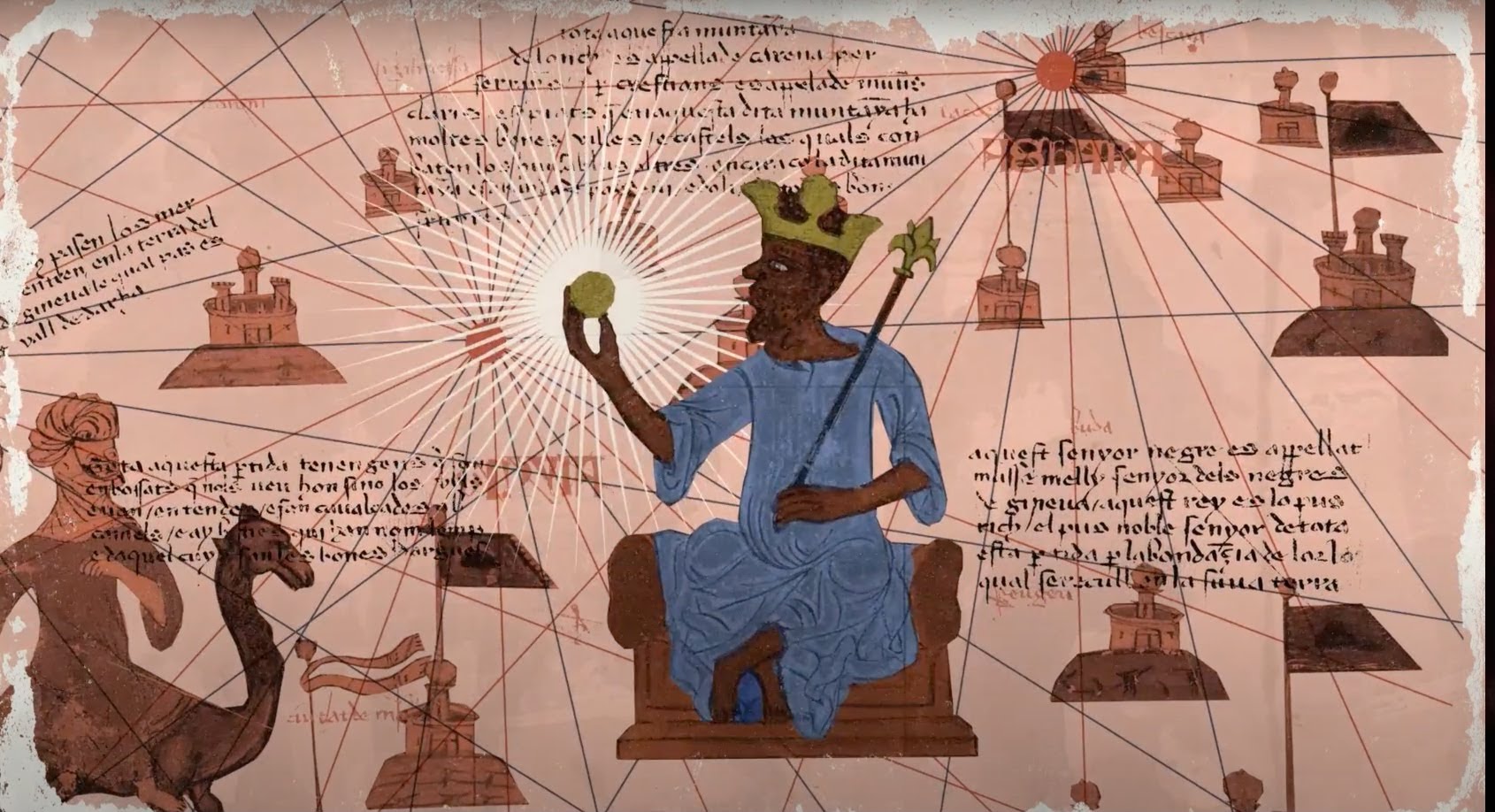Showbiz
Google Unveils Digital Treasure Trove, Mali Magic

By Dipo Olowookere
A digital treasure trove called Mali Magic aimed to preserve and showcase the historic and contemporary art and culture of Mali has been launched by Google.
With the launch of Mali Magic, people from all over the world can view an array of manuscripts, music, art and heritage sites including over 40 000+ digitised endangered manuscripts many of which were smuggled to safety during political unrest in the country.
It also contains more than 50 exhibits which include the first online, interactive tours of some of Mali’s most significant historic sites, at-risk mausoleums and mosques including the Sidi Yahiya and Djinguereber Mosques and the Tomb of Askia, all created using Street View.
The Mali Magic project contains over 40,000 assets digitised manuscript pages, more than 50 exhibits on Mali heritage (manuscripts, music, monuments & contemporary art), the first-ever Street View capture in Mali of 9 heritage sites, a 3D model and annotated tour of Djenne Mosque, as well as one music album, Maliba, by Fatoumata Diawara.
Since 2015, Google Arts & Culture has been working with local and international organisations to digitise, curate and share Mali’s incredible stories and rich heritage.
Together with its local partners, Google Arts & Culture identified four key pillars of Malian culture; manuscripts, music, monuments and modern art – and worked closely with local communities and experts to digitally document the country’s rich art, architecture, scholarship and musical tradition, and to share stories of its resilience in the face of political struggles with the world.
Google Arts & Culture also worked with artist and musician DJ Spooky (Paul Miller) to create short videos to explore the evolution of storytelling, from West Africa to the American blues.
An original album, Maliba, by Malian singer-songwriter Fatoumata Diawara, produced in Mali and written about the country’s cultural legacy, was created exclusively for the project. The collection also contains a wealth of videos and imagery which capture Mali’s contemporary art scene and profile some of its artists.
“The Malian city of Timbuktu gave birth to an abundance of learning in the fields of human rights, morality, politics, astronomy and literature captured in thousands of manuscripts.
“When this ancient knowledge was threatened by extremist groups in 2012, local communities raced against time to preserve these treasures. This legacy is now available for people across the world to explore,” the Program Manager and Digital Archaeologist for Google Arts & Culture, Chance Coughenour, stated.
Dr Abdel Kader Haidara, the ‘badass librarian’ known for smuggling the manuscripts out of Timbuktu, said, “[They] are more than important historical documents.
“Central to the heritage of the West African nation of Mali, they represent the long legacy of written knowledge and academic excellence in Africa, and hold potential to inspire global learning from the actions of the past in confronting modern-day issues.”
Showbiz
MTF’s Best Graduating Student Winner Achimugu Begins New York Film Academy NYFA Journey

Winner Achimugu, the MultiChoice Talent Factory (MTF) Best Graduating Student 2024, has embarked on a six-week scholarship at the prestigious New York Film Academy (NYFA). This achievement not only celebrates her exceptional talent and dedication but also reinforces MTF’s commitment to nurturing world-class African filmmakers ready to make their mark on the global stage.
Since its inception, MTF has been more than just a training ground; it’s a launchpad for African storytellers. Alumni from the academy have consistently demonstrated excellence, with films and projects winning awards, receiving grants, and gaining international recognition. Notable projects include 2070, which clinched Best Short Film at the African SDGs Film Festival, and Isekonu, a Zee World short film, officially selected for the Lagos Fringe Festival 2025 and nominated for Best Student Film at the Bayelsa International Film Festival.
These achievements reflect MTF’s ethos of equipping young filmmakers with both the technical skills and creative vision necessary to succeed, both locally and internationally.
The 2024 Best Graduating Student, Winner Achimugu, distinguished herself among her peers with a combination of talent, dedication, and storytelling finesse. Her selection for the NYFA scholarship is a testament to her hard work and to the quality of mentorship and training at MTF.
Through this program, she will engage in intensive workshops, hands-on training, and industry exposure that promise to elevate her craft. The scholarship is not just an award, it is a bridge connecting African storytelling to global cinematic opportunities, embodying MTF’s brand promise of fostering talent that transcends borders.
This scholarship opens new avenues for growth, offering exposure to international techniques, networks, and collaborative experiences that could define the trajectory of her career. For MTF, it’s a validation of its mission: cultivating a generation of filmmakers whose creativity, vision, and impact will resonate far beyond Africa.
As this journey unfolds, it reinforces the message that African cinema is on the rise, powered by storytellers who are ready to take their place on the world stage. With MTF alumni leading the way, the future of African filmmaking looks brighter than ever.
Showbiz
Quickteller Celebrates African Creativity in Lagos With InsomniaQ

By Modupe Gbadeyanka
A 12-hour non-stop entertainment event offering various performances and activities all night long will take place in Lagos from the evening of December 21 into the early hours of December 22, 2025.
This programme known as InsomniaQ, is being put together by one of Africa’s leading digital payments platforms, Quickteller.
Quickteller is a brand powered by the Interswitch Group, and InsomniaQ was created to celebrate African creativity.
The all-night music and entertainment experience will hold at the Ballroom of the Lagos Continental Hotel, Victoria Island.
It is designed to capture the vibrancy and cultural energy that define Lagos in December. InsomniaQ is positioned to become Africa’s newest must-attend December destination.
The concert blends diverse African soundscapes, creative expression, and immersive lifestyle experiences, offering a night curated for music lovers, diaspora returnees, cultural enthusiasts, and everyone drawn to the city’s festive season.
More than a concert, InsomniaQ represents a new cultural moment, one that celebrates the richness, depth, and diversity of African talent. With a lineup cutting across contemporary and alternative genres, the festival aims to introduce a bold, fresh, and unforgettable experience within Lagos’ already vibrant entertainment landscape.
“InsomniaQ is an invitation to celebrate African creativity in a way that feels bold, fresh, and true to who we are.
“Quickteller has always been an essential part of the experiences people value, and this festival brings that connection to life in an entirely new dimension.
“As Lagos welcomes friends, family, and visitors from around the world each December, we are proud to introduce a platform that showcases our music, our culture, and the vibrant energy that defines this season,” the Divisional Head of Growth Marketing for Quickteller Ecosystem at Interswitch, Mr Olawale Akanbi, noted.
Through Quickteller, Interswitch continues to champion initiatives that go beyond digital transactions to enrich the everyday life of millions of Nigerians.
InsomniaQ extends this mission by empowering cultural expression, unlocking creative opportunities, and supporting the continent’s growing entertainment ecosystem.
Showbiz
Oyindamola Timothy, Steve Adeyemo, Others Win Stanbic IBTC FUZE Talent Show 4.0

By Modupe Gbadeyanka
The quartet of Oyindamola Timothy (Fashion), Steve Adeyemo (Tech), Uche Kalu (Dance), and Emmanuel Elijah (Music) emerged the category winners of the Stanbic IBTC FUZE Talent Show 4.0.
They received N10 million each for their efforts, along with mentorship opportunities, industry exposure, and support to advance their creative journeys.
The four were chosen from the 12 finalists at an event aired on Sunday, December 14, 2025, on AIT (DStv Channel 253) at 7:00 pm, Africa Magic Showcase (DStv Channel 151) at 5:00 pm, and streamed live on the official Stanbic IBTC YouTube channel, connecting millions of viewers to the excitement and energy of the show.
The 2025 edition drew over 6,000 entries nationwide and continued to inspire a new wave of innovation among young Nigerians in fashion, technology, dance, and music. The participants fought for a share of the N90 million in prizes put up by the organisers.
This year, the FUZE Talent Show also introduced an exciting new twist: The Fan Favourite Feature, which allowed viewers across the country to vote for the contestant who most inspired them. This addition deepened audience participation and further strengthened FUZE’s mission to connect creativity with community support.
“FUZE 4.0 truly lived up to its promise as The Ultimate Show, a platform that celebrates courage, creativity, and innovation.
“Every contestant who graced that stage reminded us of the extraordinary potential of Nigerian youths.
“At Stanbic IBTC, we are proud to continue creating opportunities that help young people dream bigger, think bolder, and achieve more. It is all about home-grown talent for us as we power the made-in-Nigeria initiative,” the chief executive of Stanbic IBTC Holdings Plc, Mr Chuma Nwokocha, said.
As excitement builds for FUZE Festival coming up on Saturday, December 20, 2025, attendees can anticipate experiencing this year’s edition theme The Ultimate Show in full, with circus-style attractions, from magicians and parade performers to flash mobs and art displays.
An expanded marketplace, freebies from participating partners and on-site Stanbic IBTC services will enhance convenience, while performances by Wande Coal, Pheelz, Chike, and Ms DSF will add a nostalgic, high-energy finish. Interested attendees can register to attend via the Stanbic IBTC Events App or visit www.events.stanbicibtc.com to secure their spot.
-

 Feature/OPED6 years ago
Feature/OPED6 years agoDavos was Different this year
-
Travel/Tourism9 years ago
Lagos Seals Western Lodge Hotel In Ikorodu
-

 Showbiz3 years ago
Showbiz3 years agoEstranged Lover Releases Videos of Empress Njamah Bathing
-

 Banking7 years ago
Banking7 years agoSort Codes of GTBank Branches in Nigeria
-

 Economy3 years ago
Economy3 years agoSubsidy Removal: CNG at N130 Per Litre Cheaper Than Petrol—IPMAN
-

 Banking3 years ago
Banking3 years agoFirst Bank Announces Planned Downtime
-

 Banking3 years ago
Banking3 years agoSort Codes of UBA Branches in Nigeria
-

 Sports3 years ago
Sports3 years agoHighest Paid Nigerian Footballer – How Much Do Nigerian Footballers Earn













